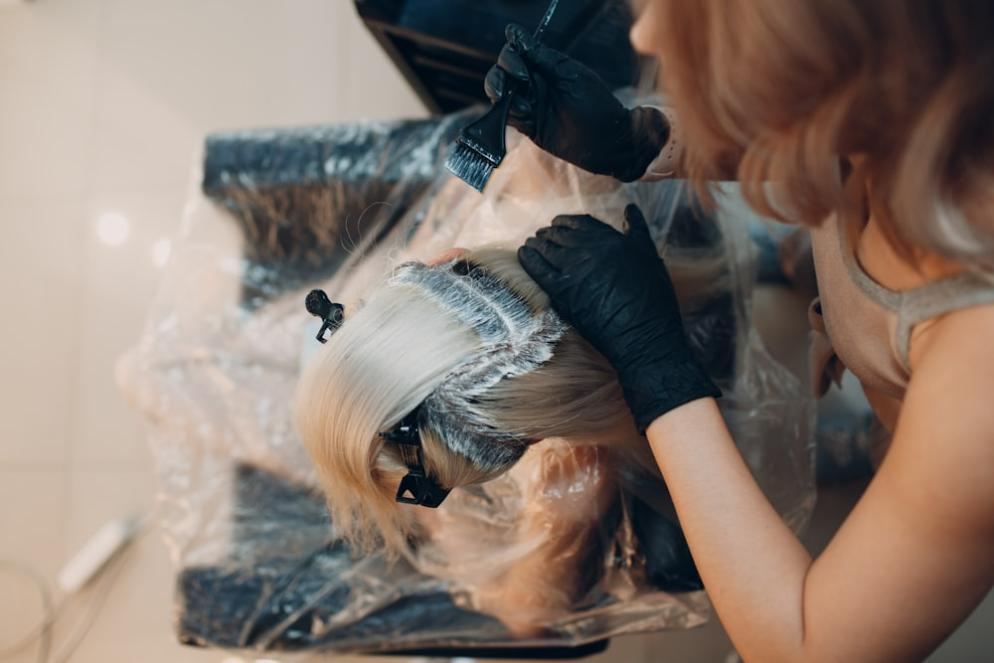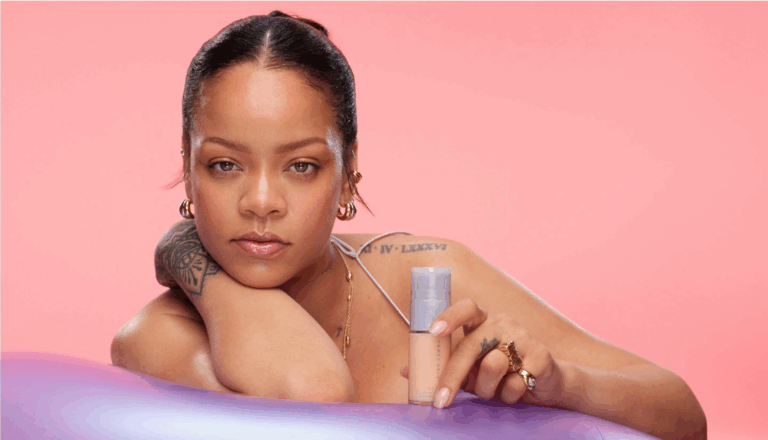With the increase of social tolerance, popular fashion, and pop culture booming in China, hair coloring has become a common trend, but prejudice and misunderstanding about hair color still exist in some people’s concepts. Influenced by various aesthetics and trends, people express their personalities and preferences through different hair colors. The hair coloring market in China is developing rapidly, increasing from RMB 5 billion in 2017 to RMB 22 billion in 2021, with a compound growth rate of 44.8%.
Download our report on Chinese beauty consumer pain points
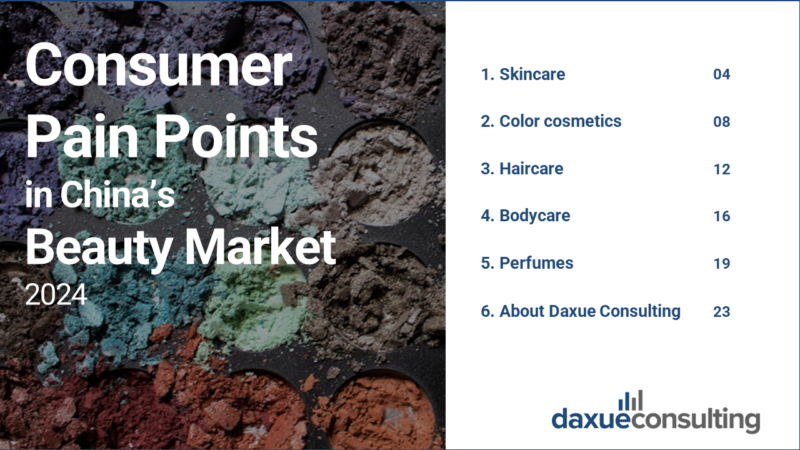
Market dynamics: The expanding landscape of hair coloring in China
The surge in popularity of hair coloring has led to significant growth in the hair coloring market. With hair dyes priced affordably at around RMB 100-200 on average, many individuals opt for DIY coloring due to the accessibility of complete instructions and precautions shared on social media platforms. Moreover, advancements in technology continually drive innovation in hair dye products, enhancing their quality and safety to meet evolving consumer demands.
Presently, there is a surge in the popularity of convenient and affordable hair dyes. Most of the popular hair dyes on the market at present are dominated by brands such as L’Oreal, Schwarzkopf, Kao, and Amore, and some cheaper national brands are gradually approaching the public eye. Large groups of brands in the quality of the more guaranteed by consumers favored, and like Amore invited the KPOP group Blackpink as endorsement, harvested a lot of fans of the pursuit. Although hair dyes are relatively inexpensive, there are still many problems associated with doing it yourself, such as uneven coloring and incomplete coloring. Meanwhile, Amore’s bubble color is so damaging to the hair that netizens have begun suggesting online that people choose other brands or go to the barbershop to color their hair.
Regardless of whether hair coloring is done professionally or at home, it inherently compromises hair quality due to the chemical processes involved. Consequently, there is a growing demand for hair care products among those who color their hair, driven by the desire to mitigate damage. Rather than abstaining from coloring altogether, consumers seek safer hair coloring options and effective hair care solutions, as well as hair colors that require minimal processing.
Chinese public perception of hair coloring
More than a decade ago, hair coloring was still a strange phenomenon in the eyes of the public, and exaggerated hair color was even called Feizhuliu (非主流), meaning different from the mainstream of society. As society continues to grow and open up, people are becoming more open and tolerant of hair coloring. Today, more and more Chinese people are embracing hair coloring as an expression of individuality and style. The younger generation in particular tends to experiment with a wide range of hair colors to express their unique style and personality. Despite the increase in the number of people who dye their hair, there are still some conservative attitudes that have reservations about it, especially in more traditional and less-developed areas.
In 2022, a girl who dyed her hair pink was subjected to cyber violence after she uploaded a photo of herself with her ill grandfather on a social media platform, and was suspected by some people of falsifying her academic qualifications, engaging in sex work, and even rumors that she had an inappropriate relationship with her grandfather. Much hate was focused on her pink hair. Despite resorting to legal help, the girl eventually committed suicide due to depression.
There are many other examples of social prejudice caused by hair color dyeing, discouraging many people who want to wear exaggerated hair colors. A common example of this is the fact that many young people living in the city return to their homes in the countryside and change their eye-catching hair color back to black or some other understated color.

Source: Xiaohongshu, controversial posts about girl’s hair
How hair color represents individuality among young people
High school graduates have always been the main group of hair coloring because the strict appearance rules for students on campuses inhibit high school students from pursuing beauty, so the end of the college entrance exam means the liberation of their nature. Many high school students say the first thing they do after the college entrance exam is to color their hair.
As a completely opposite environment, China’s universities are a place full of diversity, where many students are experimenting with a wide variety of hairstyles and hair colors. The higher level of tolerance makes college students choose more extravagant colors, selecting their hair color according to their own preferences, so some bright colors are very common, such as blonde and pink.
Another reason many college students dye their hair frequently during college is that many government-related professions in China do not allow employees to wear exaggerated hair colors or even dye their hair. For example, nurses, police officers, and railroad crew members are required not to dye their hair, bank employees can only dye their hair in dark colors. At the same time, because of social prejudice, many people choose not to color their hair in order to maintain their professional and serious image, such as lawyers and teachers. Therefore, as the last stage before entering society, many college students take this opportunity to color their hair.
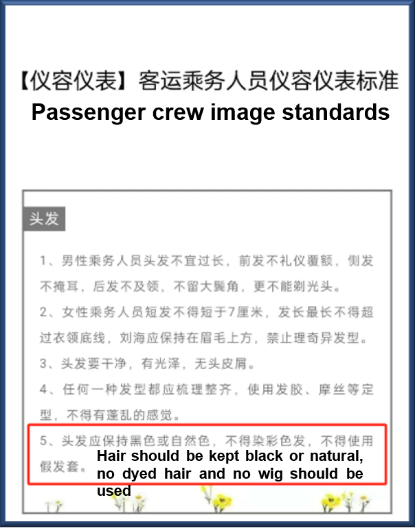
Source: Xiaohongshu, passenger crew image standards
Popular trend becomes the basis for hair color selection
Young people’s hair color choices are influenced by a variety of trends, with Japanese and Korean trends being the most typical examples. Anime, Comics, and Games (ACG) culture plays an important role in this regard. Inspired by Japanese anime, many young people emulate the hair color and styling of their favorite characters, choosing to dye their hair in exaggerated colors such as blue, pink, and green. These hair colors are often paired with special anime hairstyles to create a unique style.
Another trend that attracts a lot of attention from young people is the styling of KPOP stars, whose stage makeup and daily hairstyles are created by professional hairstylists, which not only have trendy attributes, but also suit the facial features of Asians perfectly. As a result, many young people imitate their favorite stars by purchasing the hair dyes used by KPOP stars or asking their hairdressers to help them achieve the same hair color.
The Maillard style, gaining popularity for its unique clothing style, has also become widely embraced by young Chinese for its hair coloring aesthetic, characterized by layering various shades of brown such as tan, reddish brown, and warm yellow-browns. In particular, Asian style hair color is highly sought after. This hair color not only suits Chinese skin tones and features but also satisfies young people’s pursuit of European and American styles. In addition to brown-dominated hair colors, many people also choose silver highlights, this hair color is more suitable for those who want to show off their natural beauty, and many people with brownish skin also love it.
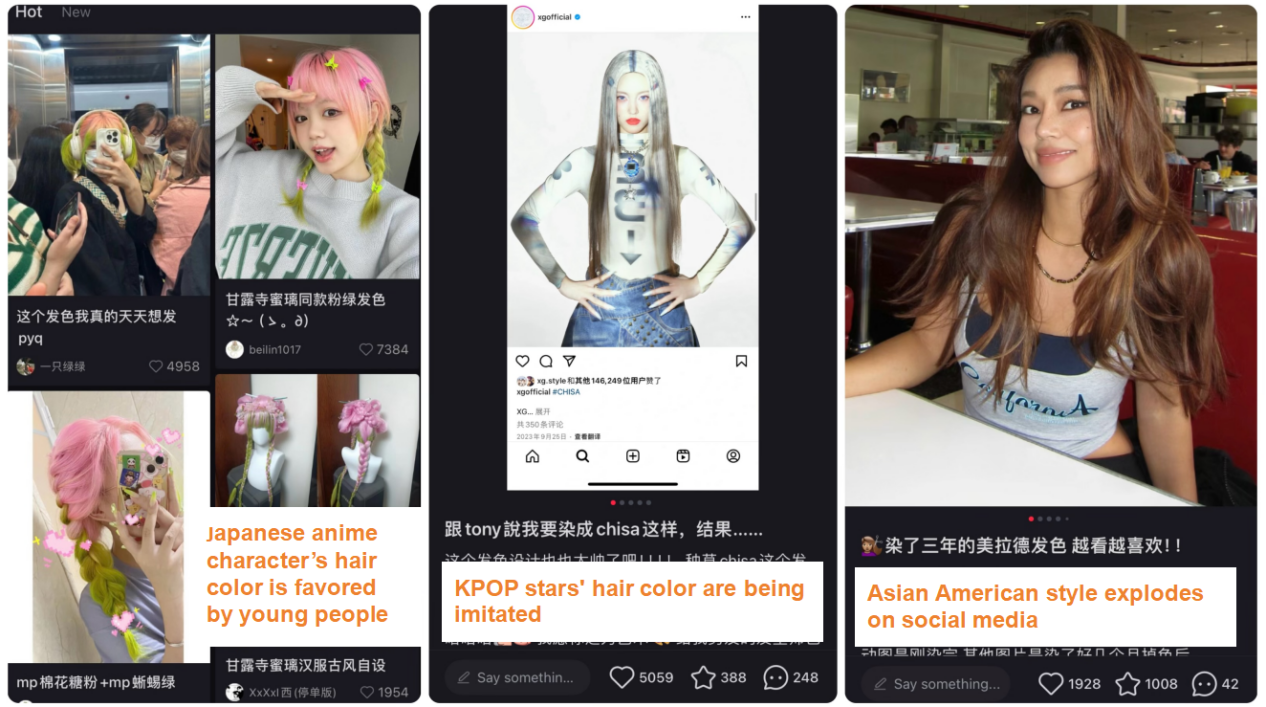
Source: Xiaohongshu, Hair color influenced by different trends
Hair color dilemma: balancing trends and techniques
In this digital age, people can easily access posts from various fashionistas and beauty bloggers through social media to learn about the latest hair coloring trends, hairstyles, and hair coloring tips. On these platforms, users can not only browse other people’s hair coloring experiences, but also interact with other users, share their own hair coloring experiences, recommend quality hair coloring products, and even seek other people’s advice and opinions. However, despite the abundance of well-developed and detailed hair coloring tips on social media, many people choose to do their own DIY hair coloring in order to save money. However, problems such as uneven dyeing and colors that don’t meet expectations occur due to poor technique or time control.
In addition to the effects of DIY failures, many consumers who wish to pursue complex hair colors also choose to seek professional services at hair salons. In the salon, the hairdresser will not only consider the subjective needs of the client, but will also assess factors such as the client’s skin tone, facial features, and personal style in order to suggest an appropriate hair color. Despite the experience of those professionals, there are still cases where the final result does not match with the client’s expectations.
Similar cases are common as hairdressers charge higher fees and fail to provide results to the satisfaction of their clients, which often triggers disputes between the two parties. In addition, barbers will also promote various hair care products, which increases the cost to consumers and may also cause resentment among some consumers. Despite the booming hair coloring market, it is difficult to guarantee the results of hair coloring, which makes hair coloring a part of people’s worries.
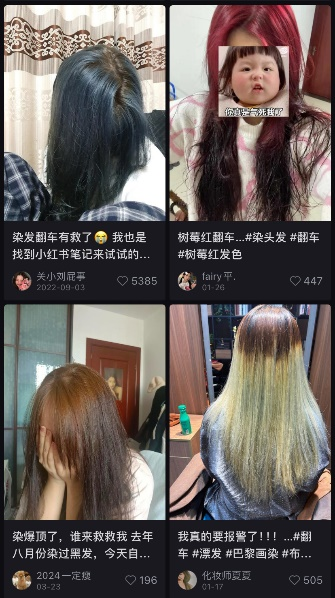
Source: Xiaohongshu, there are over 149 million views related to Hair coloring failure as of May 14, 2024 on Xiaohongshu
Hair coloring in China: a promising market
- Hair coloring in China has become increasingly common due to societal changes, though prejudice against it still exists.
- Young people, especially students, often dye their hair to showcase their nature and uniqueness, opting for bold hair colors.
- The youth’s hair color choice is heavily influenced by various fashion styles, celebrities, and cultural trends, revealing their preferences, personality traits, and styles.
- The rising popularity of hair coloring is driving growth in both the hair coloring and hair care markets.
- Unprofessional techniques often result in unsatisfactory hair coloring outcomes, making consumers hesitant to dye their hair.
We are experts in Chinese consumer insights
Amidst the evolving social acceptance and vibrant pop culture in China, the hair coloring market is experiencing rapid growth. Understanding these changes is essential for businesses looking to tap into this burgeoning sector. Daxue Consulting provides specialized market research and consumer insights to help companies navigate the complexities of China’s hair coloring industry.
Our expertise can guide you in addressing consumer concerns, capitalizing on emerging trends, and developing effective marketing strategies. Whether you’re refining product lines or exploring innovative business models, we offer the insights you need to succeed. Contact us to leverage our knowledge for your strategic advantage in the dynamic Chinese hair coloring market.



